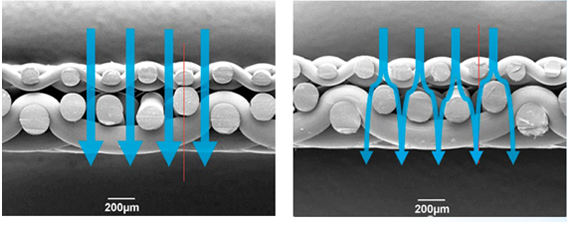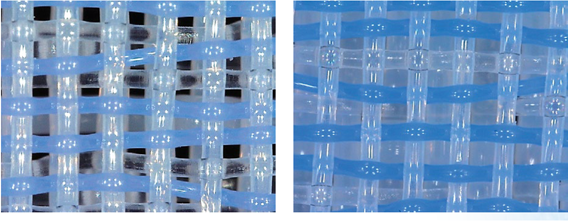Seeking excellence with polarized forming fabrics
Oct 2, 2017
In 2016, Valmet introduced a new generation of forming fabrics with a polarized structure. Customer experiences have shown that these polarized forming fabrics have the potential to revolutionize water removal in the papermaking process.
SSB (sheet support binding) forming fabrics entered the paper and board industry in the mid-90s. Since then, these fabrics have been made thinner and finer to achieve higher retention, excellent paper and board quality, and to improve the runnability of the machines.
However, thinner forming fabrics started to face durability problems, and product development needed to find a new solution to meet customers’ expectations.
“In 2016, we introduced a new polarized structure in the forming fabrics. Based on the experiences we have so far, we most likely created something that will revolutionize the water drainage process in the wire section,” says Pekka Kortelainen, Product Technology Manager for Forming Fabrics at Valmet.

|
On the left: Standard SSB fabric: Straight-through drainage channels. On the right: Polarized fabric: The machine direction yarns eliminate the straight-through channels.
|
|

|
On the left: Standard SSB. |
. |
Polarized structure improves machine runnability
Demand for polarized fabrics growing
“I respect the way Valmet strives to improve their customer’s performance”“Our target was to further improve our formation without losing our good dewatering. We had used standard Valmet Forming Fabric GM fabrics over the years. When Valmet proposed their new polarized designs, we agreed to test the new concept, even though the reference list was rather slim at that time.
“From the first set, we saw the advantages of the polarized structures: We were able to significantly improve formation as we wanted, but the cleanliness and runnability were also good, and the dry content remained excellent. Since that first trial, those polarized fabrics have become our standard Valmet design fabrics.
“Valmet has been Parenco’s key partner in paper machine clothing for over 30 years, and we truly appreciate their support and excellent services.”
Yan Vassart, Operations Manager, Parenco
|
Customer satisfaction stands for success
|
Case 1: Improved cleanliness with polarized Valmet Forming Fabric GM Case 2: Higher retention achieved with polarized Valmet Forming Fabric GM
A customer is producing fine paper and has been using Valmet’s standard fabrics for years. Retention has been around 82%. The customer conducted a trial with an other supplier’s super-fine fabric and was able to increase retention to 86%. After Valmet’s proposal, the customer was willing to test Valmet’s new polarized fabrics in the bottom position. The results were very good, as retention increased to 91% and the machine ran cleanly. As the trial was successful, the customer ordered a set of polarized fabrics for both positions.
Case 3: Lower-roughness two-sidedness with polarized Valmet Forming Fabric GM
A customer’s machine has moved to more calendered, improved news grades. There has been demand for lower-roughness two-sid-edness, as the top side PPS roughness has been 20–25% higher than the bottom. After changing to Valmet Forming Fabric GM, the difference decreased to 15%, but a trial run was still performed with a polarized version of the same fabric type. The experiences were very good, as the roughness difference decreased to 8%, combined with very good runnability. As a result, the customer ordered a similar set.
|